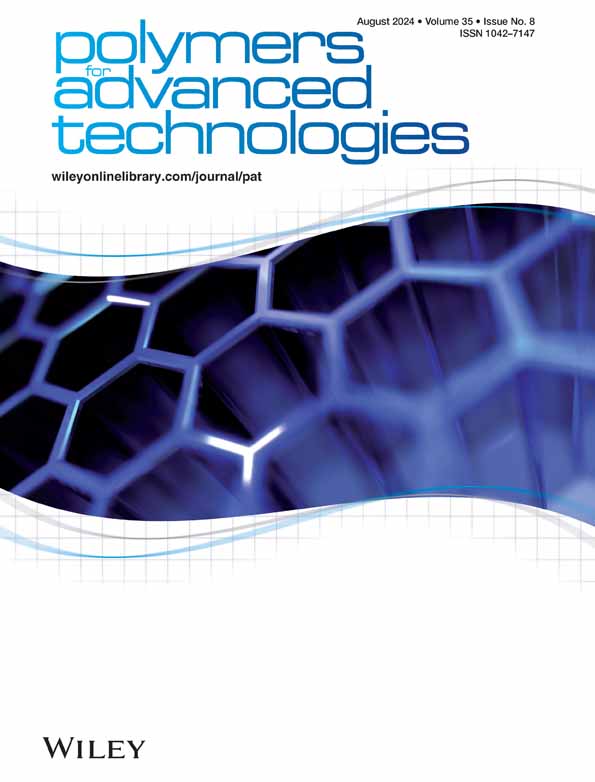石墨烯量子点在尖端医疗疗法中的作用
IF 3.4
4区 工程技术
Q2 POLYMER SCIENCE
引用次数: 0
摘要
石墨烯量子点(GQDs)因其独特的光学、电学和化学特性,已成为各种生物医学应用中极具前景的纳米材料。本综述全面概述了将 GQDs 应用于组织工程、伤口愈合、给药系统和其他生物医学疗法的最新进展。GQDs 固有的特性,包括高生物相容性、可调光致发光和巨大的比表面积,使其成为提高医疗和诊断效果的理想候选材料。在组织工程中,GQD 可改善支架的机械和生物性能,促进细胞增殖和分化。在伤口愈合方面,GQDs 可增强抗菌活性,加快组织再生。GQDs 在 DDS 方面的潜力突出表现在它能够高效地输送治疗药物,确保有针对性地控制释放。此外,GQDs 还能提高药物疗效并减少副作用,因此在生物医学疗法,尤其是癌症治疗中发挥着至关重要的作用。虽然 GQDs 在提高医疗和诊断效果方面具有巨大潜力,但了解其长期生物相容性、高浓度下的潜在细胞毒性以及标准化合成方法的需求等挑战仍是进一步研究的关键领域。本综述还讨论了 GQDs 的未来发展方向和机遇,强调了它们在推进现代医疗解决方案方面的变革潜力。本文提出的见解有助于不断扩大 GQD 研究领域,突出了它们在显著提高患者治疗效果和推动医疗创新方面的潜力。本文章由计算机程序翻译,如有差异,请以英文原文为准。
The role of graphene quantum dots in cutting‐edge medical therapies
Graphene quantum dots (GQDs), owing to their unique optical, electrical, and chemical properties, have emerged as promising nanomaterials for various biomedical applications. This review provides a comprehensive overview of the latest advancements in the utilization of GQDs in tissue engineering, wound healing, drug delivery systems, and other biomedical therapies. The inherent properties of GQDs, including high biocompatibility, tunable photoluminescence, and significant surface area, make them ideal candidates for enhancing medical treatments and diagnostics. In tissue engineering, GQDs improve the mechanical and biological performance of scaffolds, promoting cell proliferation and differentiation. For wound healing, GQDs enhance antimicrobial activity and facilitate faster tissue regeneration. Their potential in DDS is highlighted by their ability to deliver therapeutic agents efficiently, ensuring targeted and controlled release. Additionally, GQDs play a crucial role in biomedical therapies, particularly in cancer treatment, by enhancing drug efficacy and reducing side effects. While GQDs offer significant potential in enhancing medical treatments and diagnostics, challenges such as understanding their long‐term biocompatibility, potential cytotoxicity at higher concentrations, and the need for standardized synthesis methods remain critical areas for further research. This review also discusses the future directions and opportunities for GQDs, emphasizing their transformative potential in advancing modern healthcare solutions. The insights presented here contribute to the expanding field of GQD research, highlighting their potential to significantly enhance patient outcomes and drive healthcare innovations.
求助全文
通过发布文献求助,成功后即可免费获取论文全文。
去求助
来源期刊

Polymers for Advanced Technologies
工程技术-高分子科学
CiteScore
6.20
自引率
5.90%
发文量
337
审稿时长
2.1 months
期刊介绍:
Polymers for Advanced Technologies is published in response to recent significant changes in the patterns of materials research and development. Worldwide attention has been focused on the critical importance of materials in the creation of new devices and systems. It is now recognized that materials are often the limiting factor in bringing a new technical concept to fruition and that polymers are often the materials of choice in these demanding applications. A significant portion of the polymer research ongoing in the world is directly or indirectly related to the solution of complex, interdisciplinary problems whose successful resolution is necessary for achievement of broad system objectives.
Polymers for Advanced Technologies is focused to the interest of scientists and engineers from academia and industry who are participating in these new areas of polymer research and development. It is the intent of this journal to impact the polymer related advanced technologies to meet the challenge of the twenty-first century.
Polymers for Advanced Technologies aims at encouraging innovation, invention, imagination and creativity by providing a broad interdisciplinary platform for the presentation of new research and development concepts, theories and results which reflect the changing image and pace of modern polymer science and technology.
Polymers for Advanced Technologies aims at becoming the central organ of the new multi-disciplinary polymer oriented materials science of the highest scientific standards. It will publish original research papers on finished studies; communications limited to five typewritten pages plus three illustrations, containing experimental details; review articles of up to 40 pages; letters to the editor and book reviews. Review articles will normally be published by invitation. The Editor-in-Chief welcomes suggestions for reviews.
 求助内容:
求助内容: 应助结果提醒方式:
应助结果提醒方式:


